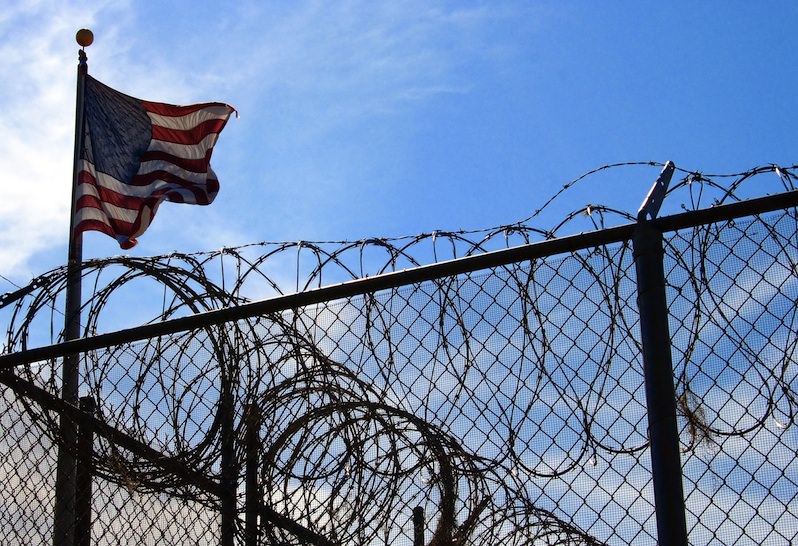Locking Kids Up, Letting Them Down
At-risk youth in the United States are being locked up without a key. Shutterstock
Shutterstock
At-risk youth in the United States are being locked up without a key. The city streets are always churning out new opportunities to ruin the life of a kid living in tough circumstances. Many different kinds of young people end up in our prison system — from various educational, racial and geographical backgrounds — but undereducated minorities are the most likely to end up jailed. From 2000 to 2011, African-American males between the ages of 18 and 24 faced an average imprisonment rate of 3,148 of every 100,000, according to research from the U.S. Bureau of Justice Statistics. In contrast, whites of the same age faced an average rate of 463 per 100,000 — that’s six times less. This news may not come as a surprise, unfortunately, but it’s important to be aware of the scope of this problem.
That’s why Elizabeth Calvin of Human Rights Watch is so excited that California Gov. Jerry Brown signed a bill last month to help young jailed offenders. Assembly Bill 1276 will create committees to consider whether each entering prisoner under the age of 22 could be placed in a lower-security prison with better access to educational and self-help programs than found in higher-security facilities. Calvin told Truthdig that there are a total of about 20,000 18-, 19- and 20-year-old inmates in California alone, and certain rules in the state’s prison system force them into maximum-security prisons.
“The classification that the CDCR [California Department of Corrections and Rehabilitation] has used basically uses youth or being young at the age of the time of crime … against them,” Calvin said. She pointed out that there have been studies showing people who commit crimes when they are young are more likely to commit crimes again later in life. The CDCR has a point system that determines what security level the prison to which a criminal will go will be — more points means a higher-security facility — and Calvin said being young at the time of the crime gives the offender “significantly more points.”
That means that making a mistake as a youth could mean he or she will be interacting with adult murderers, rapists and other dangerous individuals doing time. A person who commits a mugging at the age of 30 might end up at a low-level prison, while an 18-year-old could be sent to a maximum-security one. Minors serving terms in juvenile facilities are often transferred to these dangerous prisons on their 18th birthday, Calvin explained.
She worries that these young people who are sent to maximum-security prisons are given little chance to change their ways. A young inmate exposed to the environment of a maximum-security prison is likely to get involved with gangs just for protection. “When you turn to the gangs for protection, then you have to do their bidding,” she said. “Young adults are vulnerable. They’re vulnerable to assault, negative influences, and they also have tremendous potential because they’re still developing.”
Although the law considers an 18-year-old an adult, many at that age are not yet capable of handling things in a fully adult manner. For men and women, brain development can continue until the age of 25, which means young adults can be heavily susceptible to outside influences until then. To further complicate matters, Calvin said young adults are seen as easy targets in the prison system.
“The U.S. Department of Justice did a study on rape in prison and found that between a third and a half of all victims of rape, inmate on inmate rape in prison, are under the age of 25,” Calvin said. If a young adult is placed in a lower-security facility with less violent prisoners, he or she is less likely to be assaulted, she said, and thus may have more opportunities to change for the better.
“Level 3” prisons, as opposed to maximum-security “level 4” facilities, present more opportunities to change the lives of young inmates, Calvin said. Some level 3 prisons offer support groups, jobs the prisoners can do and more freedom to move around and access to outside areas. Some level 3 lockups, like Southern California’s Ironwood State Prison, even offer college classes, allowing inmates to obtain an associate degree. “Research does show there is a direct correlation between college education and reducing recidivism,” Calvin said.
In improving the conditions for young offenders, Calvin says it’s important to remember the environments from which they came. “These kids are our kids. They’re not somebody else’s kids. … Many of them have come from situations of terrible trauma, exposure to violence; some of them have come from situations of abuse and neglect and they need what every young person needs in order to turn things around,” she said. “Putting young adults in prison without ongoing recognition that they have special developmentally based needs is a mistake. We’re just tossing away opportunities to set people on the right track.”
Who benefits when young people are locked up and forgotten? What kind of lessons are we teaching kids who ended up in a terrible situation in which they may not have had much choice? Why not give them a chance to start again and become part of the community? These are the questions Calvin poses, and we need to consider them. “Some of them have committed crimes with terrible, painful ramifications for victims and communities, but these individuals are still young people, and they have incredible potential to not be fully defined by that one act,” she concluded.
Your support matters…Independent journalism is under threat and overshadowed by heavily funded mainstream media.
You can help level the playing field. Become a member.
Your tax-deductible contribution keeps us digging beneath the headlines to give you thought-provoking, investigative reporting and analysis that unearths what's really happening- without compromise.
Give today to support our courageous, independent journalists.






You need to be a supporter to comment.
There are currently no responses to this article.
Be the first to respond.